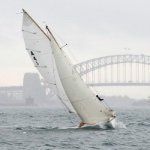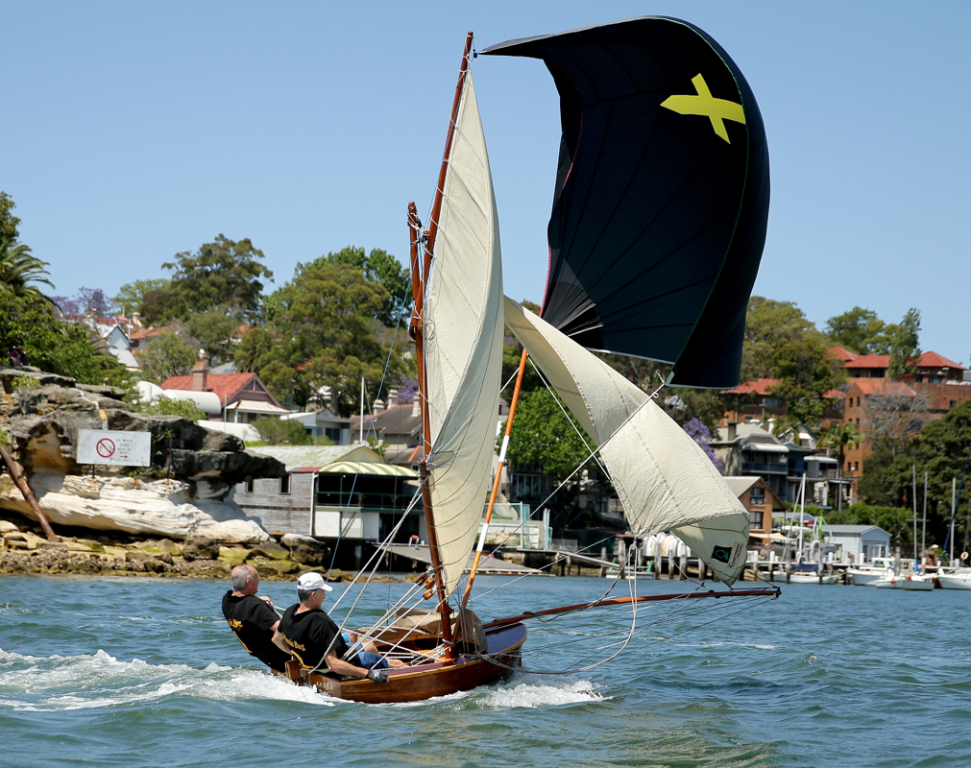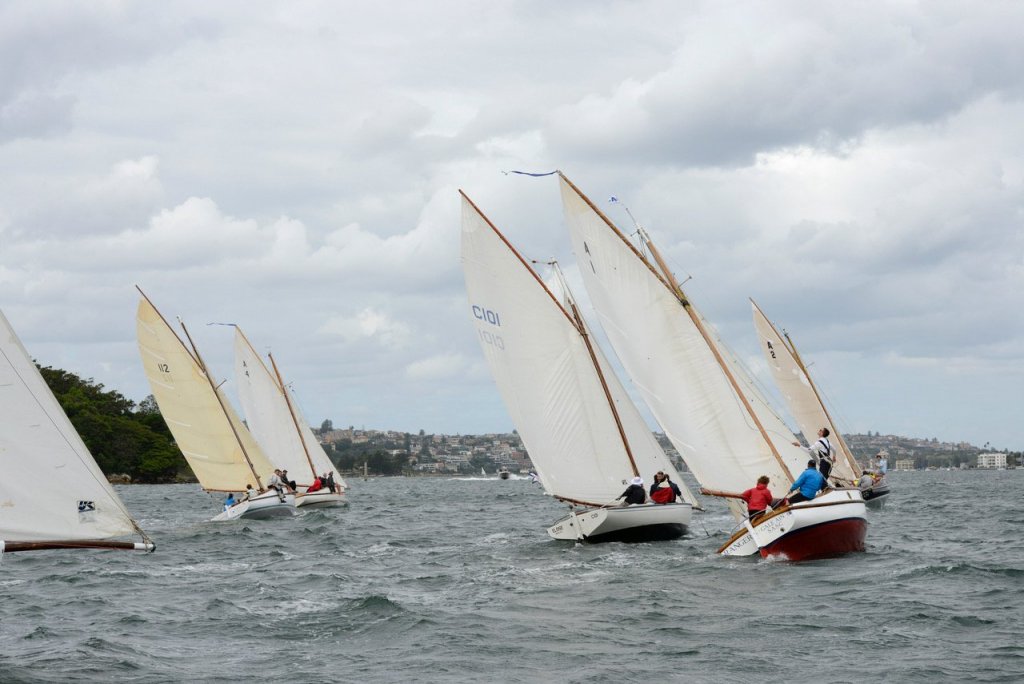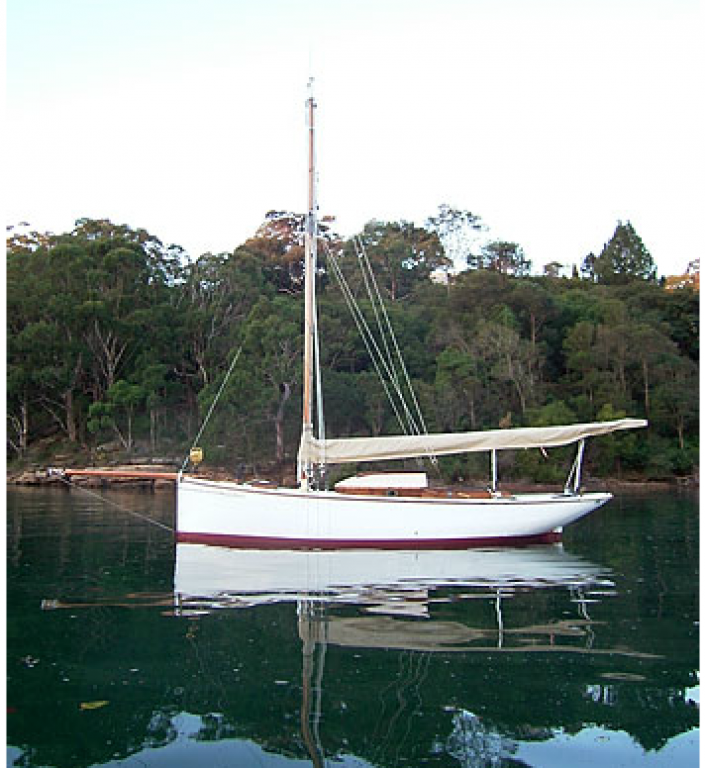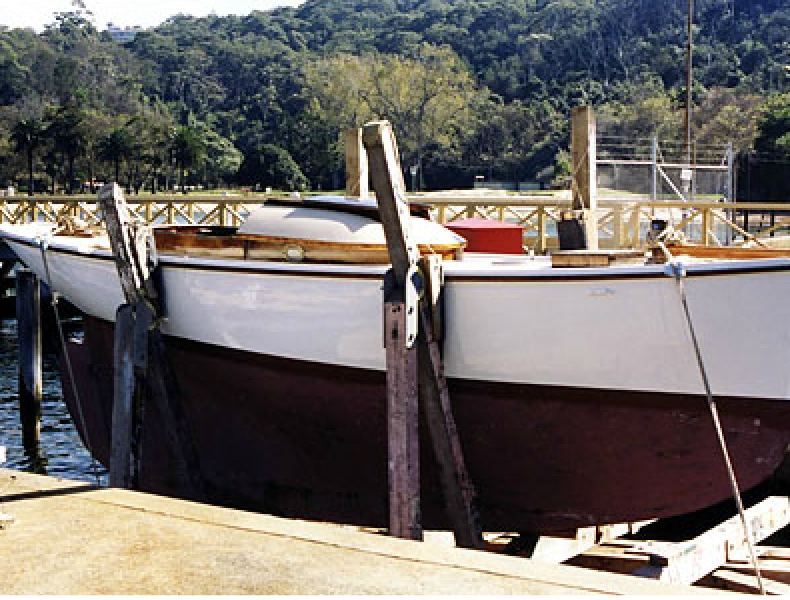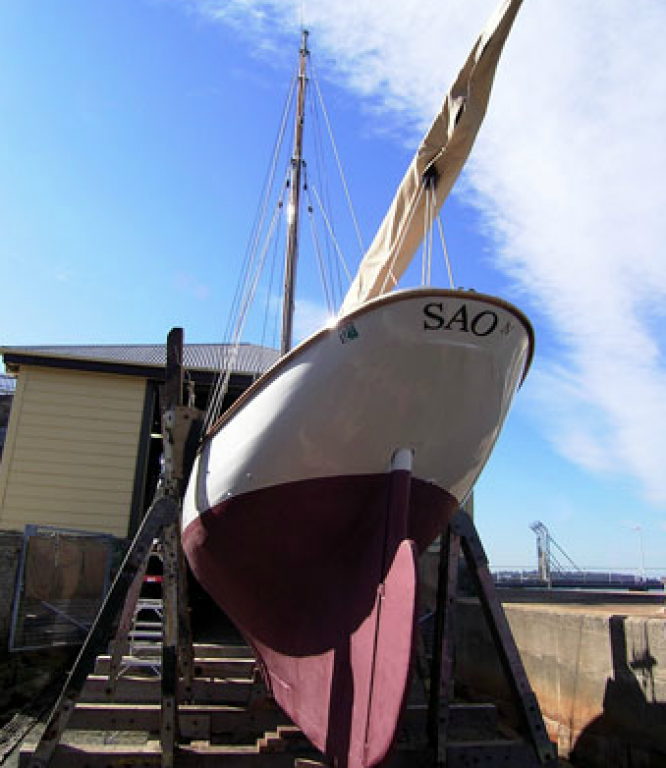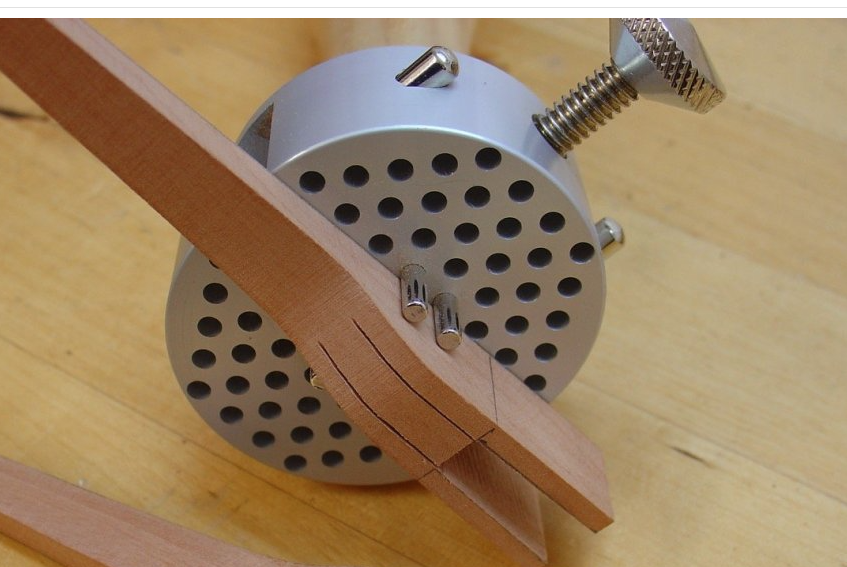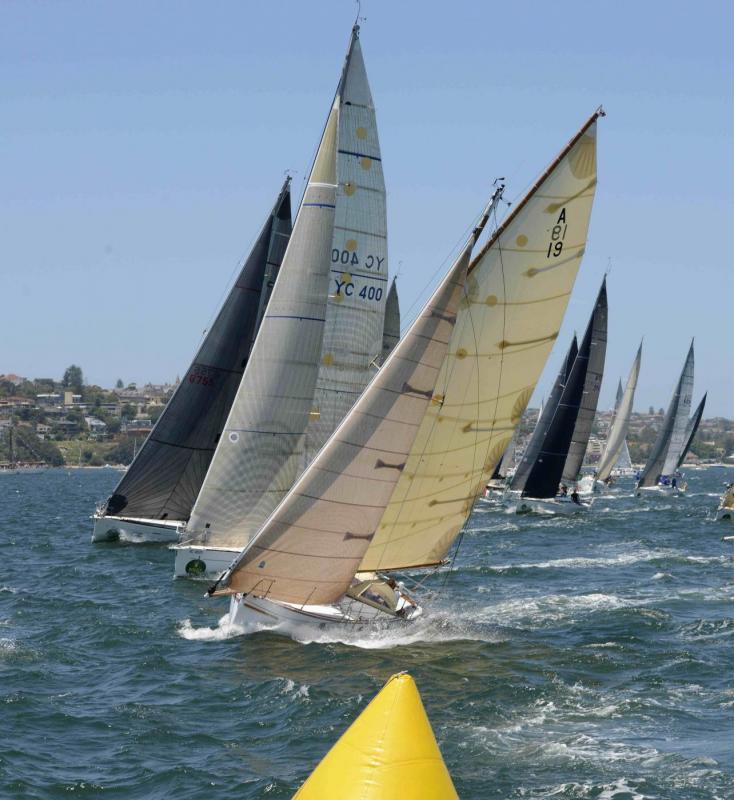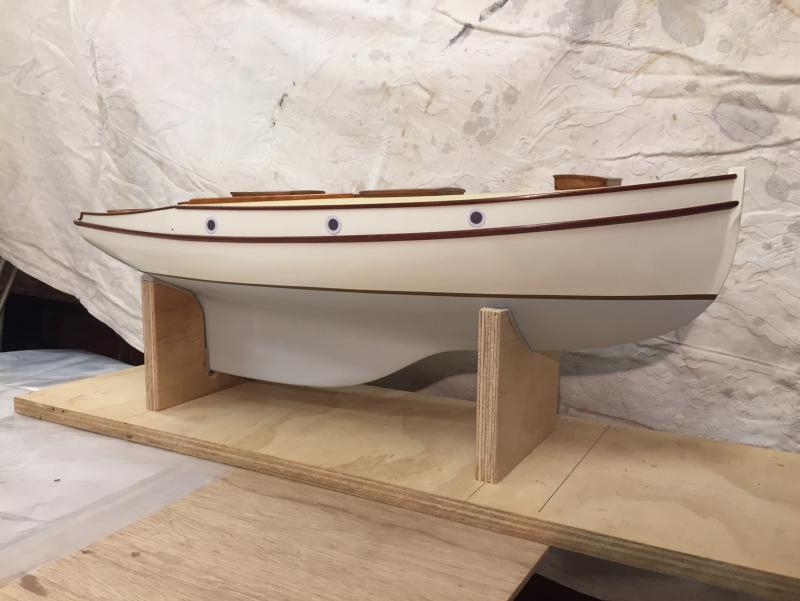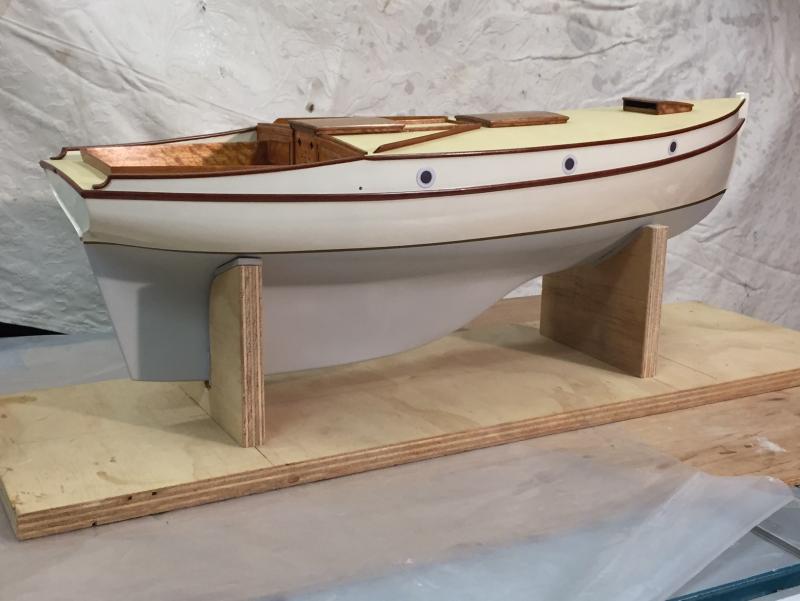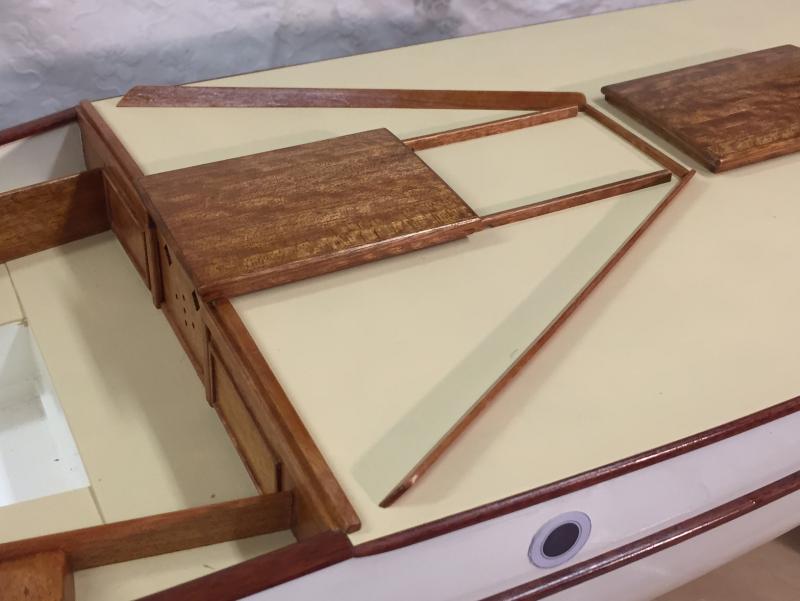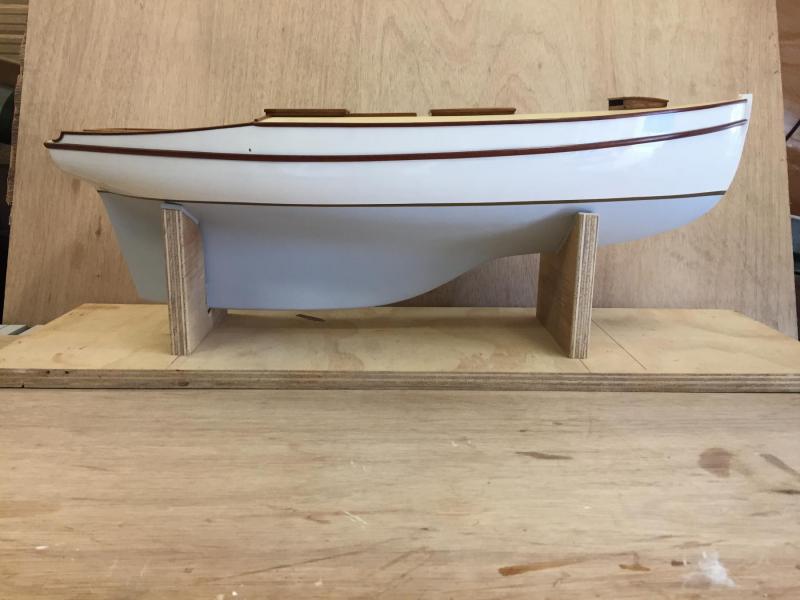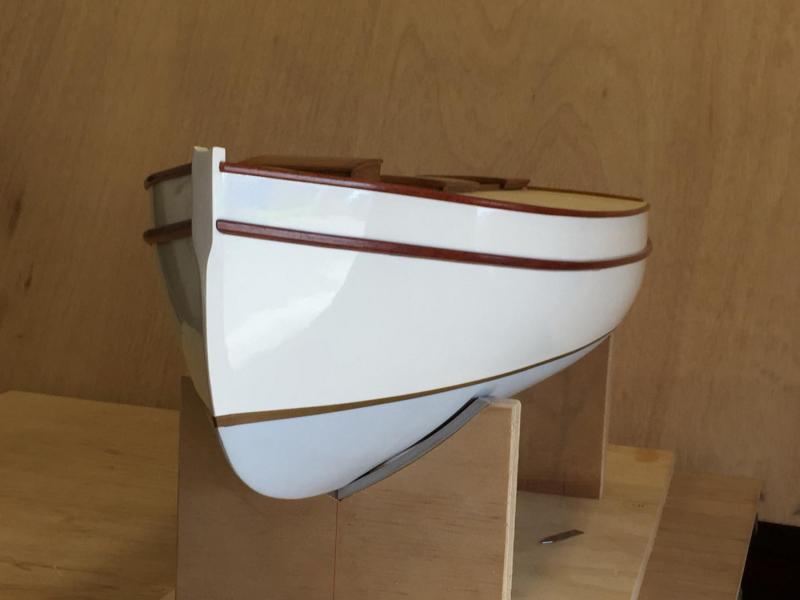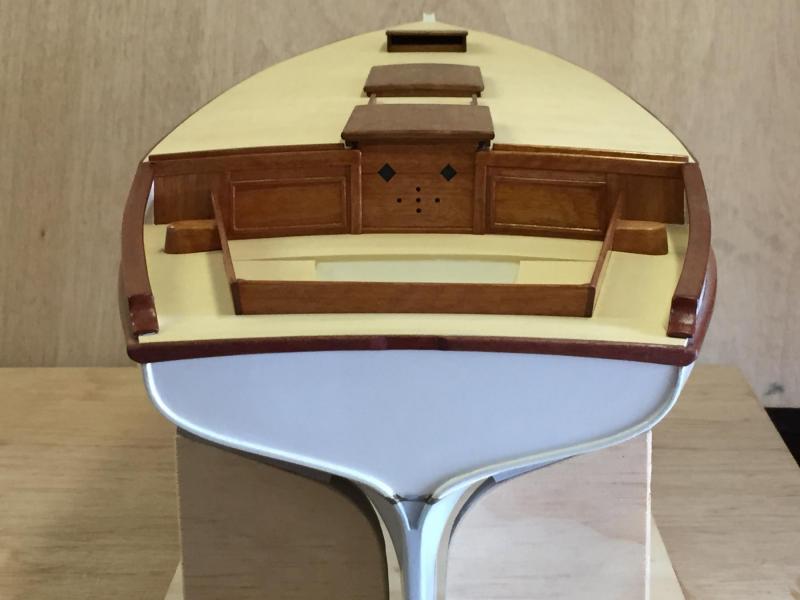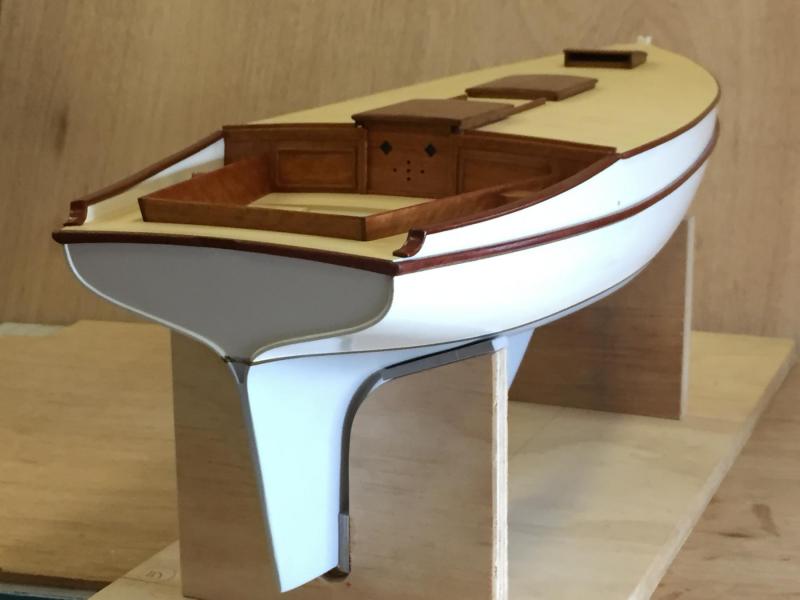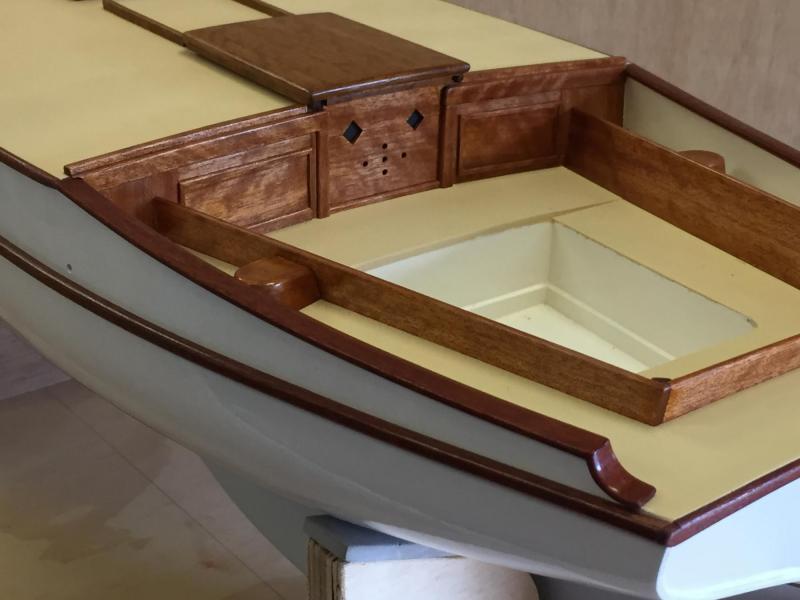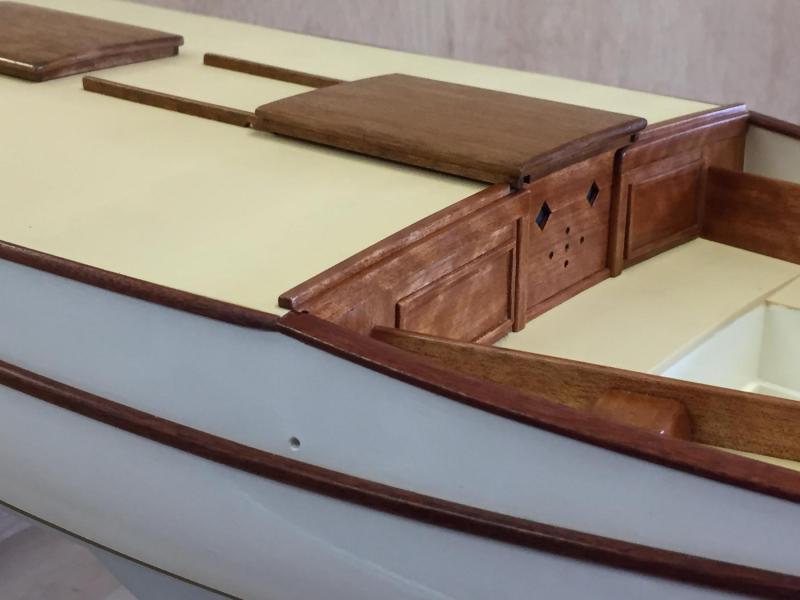-
Posts
820 -
Joined
-
Last visited
Content Type
Profiles
Forums
Gallery
Events
Everything posted by Mark Pearse
-
Hi Carl no, in this case I used wire - but my technique has improved. I was careful about the flame direction & the wire & it went easily. Thanks for the prompt, I will experiment with paste. all the best
-
I made the boom end fitting of the gooseneck, it will need some small lateral holes for the boom fixings. The process I used was: some flat bar was bent around a shape of a suitable width some other pieces cut, ends shaped & held for brazing finished
-
A small update, but an interesting one for me. The gooseneck pin: The 1:12 pin shown alongside a real gooseneck pin. What's striking is the difference seems much more than 12x; & then it dawned on me that 1:12 is really just one way of defining it. The linear scale is 1:12, but the volumetric scale is 1:1,728; when you see the pins together you see the volumetric scale rather than the linear scale. It's a dramatic picture anyway.
-
thanks all Hi Carl, yes I do use silver solder. The process is new to me, but after some research - including asking advice in these forums - I got a small butane torch plus silver solder. Is your question related to getting the solder into a more difficult joint, like the tube to flange above? You can see that my efforts to get it into the joint gave me an excess on the other joint. What ended up working was having the torch flame from one side & touching the joint with the wire from the other side. However, I'm interested if you think that silver solder paste will make it more accurate. Hi Bedford, it was more the angle that gave trouble - & of course my inexperience. I'd put the piece of solder wire towards the joint & when it went into the flame it melted & didn't get there. Only when I'd heated from one side & added the solder from the other did it work, & easily too. Lesson learned. Hi John, Keith, thanks & best wishes
-
the rudder gudgeon & pintle are now fitted & the rudder is painted, the fitting looks to be in scale The rudder curves are nice, unfortunately a phone camera lens seems to distort the shape of the hull - but you get the idea The next metalwork part is the boom gooseneck. I bent a piece of brass flat bar (about 1.25mm x 4mm) around some wood of the right diameter, cut & brazed it. This is the band that will go around the mast. You can see that it's not exactly round, but I don't think that will show when you can't see the hole, when it's on the mast. like this Flange, grooved one side to help hold the next part, the tube weighted to hold it during brazing, the tube didn't initially want to take the solder... & the result: the next part is the pin, then the part that fits on to the forward end of the boom until next time, MP
-
The gudgeon & pintle are now done, the first metalwork component is made & it feels good. I made the pin by brazing a cap onto a piece of rod. I predrilled into some flat bar to make it easier to braze them together. The single drilled tab that will go into the rudder blade, plus the pieces for the pin. Partly brazed, but it needed a bit more solder. The pieces. I sanded the flat bar round & also thinner to keep it in proportion. Done.
-
a possible additional reason for the central sheeting of the mainsail is that with such a huge & powerful sail, the third restraint would reduce the load on each by spreading the same load between three points instead of two. Maybe you can also control the sail more easily as well.
-
Hi Dick Amazing work, & the sails are beautifully done. I'm not familiar with these vessels but I have some sailing experience. The lateen sails on these pictures are very different in size, it looks to me that the larger stern sail in the painting would screen the main sail but also tend to make steering the vessel more difficult because it's large - the relationship between the sails looks different in the ink drawing. Regarding the general use of these sails, I would think that if you were entering a harbour, you would most definitely have the stern sail up, as that sail in particular would give you the ability to round up into the breeze to slow down or stop. On a different note, the mainsail shape is very interesting, they have a huge upwards billow that doesn't really increase the forwards thrust much - it's possible that the upward billow on the mainsail is intentional to help counteract the tendency of the bows to bury into the water, which would make the boat harder to steer & slower. Why they might need to do this I'm not sure, but the hull shape doesn't look to have as much forwards buoyancy as your more classic square rigged vessel, the buoyancy would counteract the downwards effect. An unrelated example might be helpful to see this - in early Sydney skiffs their spinnakers were set in a way partly to give lift & keep the bows up downwind - the situation is very different, but the size of the billow itself doesn't add power, but it changes the direction of the thrust. See below, a 6 foot skiff (copy of a type from early 1900s) - very very different, but maybe there's a connection....in the photo it's really easy to see how they are trying to stop the downwards effect on the bows. Mark
-
thanks all. Hi John, yes I love looking at photos of gaff rigged boats also. Hi Michael, I drilled the holes after brazing - to be sure that a pin will be able to slide through both holes smoothly. I sized the gap between the tangs to match the standard brass size of 1/16th", so that I could clamp a small piece of that size between the tangs when brazing & then drilling. The other part of the assembly, that goes onto the rudder & fits into this part (name?), will be from 1/32nd" flat bar so there's also a small amount of play - as there would be in real life. My metalwork equipment is pretty low-tech, I used one of those small one-hand drill holders for the holes because of the risks of using a standard hand held electric drill being too powerful. Also, I could adjust the location of the drill in the initial stages a small amount, get it more centred by angling it until the hole reached its full size & was then set in location. Mark
-
Hi everyone it's been a long break from the model, but been consoling myself plenty of this anyway: I'm starting on the metalwork details & previous efforts showed that I really to need to plan so that the pieces can be held, they are really small & I'm not used to that. So, I'm trying to make sure I ca hold them in some way. I've started on the top rudder gudgeon & pintle assembly, below is the gudgeon started. My method is v-cuts in the brass bar & then fold & solder it. The gudgeon will have a hidden rod into the transom for fixing. Below is the parts folded & the rear pin fitted. Below is after brazing & shaping. thanks, Mark
-
Hi Vaddoc your question about removing the model from the base is tricky but you have more room to do something now than later. One idea is to drill now a series of holes through each mould, at the line where you will cut later. The small piece between adjacent holes will be cuttable with in a series of short cuts, & maybe even with a knife. best of luck, Mark
-
HI Martin a lovely yacht & model. Does she come from a working boat background? The lines are amazing & very beautiful. There aren't many yachts here in Australia with lines like that, but for your interest I attached the photos one unusual yacht, built 1905. Like a miniature version of your lovely Vanity, or something similar. A 22' gaff topsail cutter based on a pilot boat lines. good luck with the build, please keep posting Mark
-
Hi Vaddoc I also did my first plank as the garboard plank, I hadn't done any planing at all before that. At the time I asked a shipwright about the shaping of a garboard plank, & he said that in a full keel boat the maximum width of the plank would usually be used at the stern end, then tapered to the bow, the amount of taper depending on the hull shape. That seems to be what you have done. best of luck with the rest
-
many thanks, John Patrick & Pete, plus the visitors The sampson post has been trimmed the cockpit area horn cleats were made & installed, the rivets were replicated with small brass nails, & I made some washers from brass rod & drilled the centre out; the cockpit coaming ones are maybe on a bit too much of an angle the rudder & tiller are underway, roughed up, & shaped as below thanks, MP
-
Hi Michael - what's the technique fro drilling acrylic sheet without cracking it? Mark
- 2,207 replies
-
A bit more....the toe rails are done & installed & I'm making the 6 horn cleats that sit around the cockpit area. The toe rails seemed especially fragile & gave me some grief. The Queensland Maple generally seems good to work with, but 1.5 x 2.5mm seems to be beyond it, just seemed to break at the slightest touch. Sampson post started also, it will need a rod plus some quad timbers to trim it off. thanks, MP
-
Hi Patrick, a very interesting project & enjoyable to watch. thanks & best wishes, Mark Pearse
- 1,083 replies
-
beautiful John. The stern shape is beautiful & looks unusual to my eye: is the design typical for these boats, & for a particular reason? thanks, Mark
- 745 replies
-
- francis pritt
- mission ship
-
(and 1 more)
Tagged with:
-
thank you As a comparison, this shows the most similar yacht, Maluka, fully powered up just after the start of last Sydney Hobart, sporting an immaculate sails set beautifully.....drool. You can see the canvas spray dodger.
-
thank you Patrick, & I agree that the designer had an artistic eye - The spray boards are on (not sure if they have a proper name), they channel spray across the deck & help stop it going down the companionway hatch, & a spray dodger would clip off to it. The toe rails will possibly be next. Also, temporary portholes / scuttles, done with paper to check position & size. thanks
-
The sponson have been glued on, plus the transom fashion piece that completes the timberwork of the sponsons around the stern. The hatches also located, there's some more deck timberwork - some spray rails, toe rails etc, Looking like a boat now. thanks, Mark
About us
Modelshipworld - Advancing Ship Modeling through Research
SSL Secured
Your security is important for us so this Website is SSL-Secured
NRG Mailing Address
Nautical Research Guild
237 South Lincoln Street
Westmont IL, 60559-1917
Model Ship World ® and the MSW logo are Registered Trademarks, and belong to the Nautical Research Guild (United States Patent and Trademark Office: No. 6,929,264 & No. 6,929,274, registered Dec. 20, 2022)
Helpful Links
About the NRG
If you enjoy building ship models that are historically accurate as well as beautiful, then The Nautical Research Guild (NRG) is just right for you.
The Guild is a non-profit educational organization whose mission is to “Advance Ship Modeling Through Research”. We provide support to our members in their efforts to raise the quality of their model ships.
The Nautical Research Guild has published our world-renowned quarterly magazine, The Nautical Research Journal, since 1955. The pages of the Journal are full of articles by accomplished ship modelers who show you how they create those exquisite details on their models, and by maritime historians who show you the correct details to build. The Journal is available in both print and digital editions. Go to the NRG web site (www.thenrg.org) to download a complimentary digital copy of the Journal. The NRG also publishes plan sets, books and compilations of back issues of the Journal and the former Ships in Scale and Model Ship Builder magazines.


